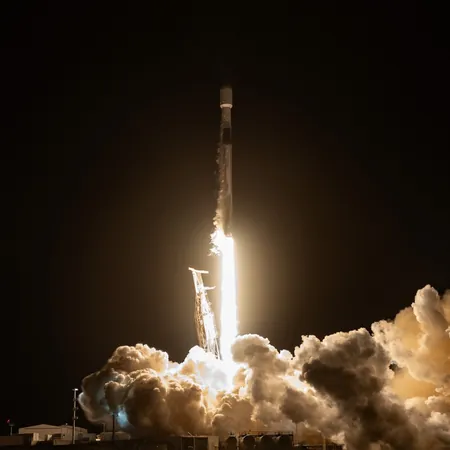
Revolutionary Carbon Capture Technique Could Transform Aquaculture and Combat Climate Change
2024-12-23
Author: Benjamin
Groundbreaking Carbon Capture Model for Fish Farms
Researchers have unearthed a groundbreaking carbon capture model designed for fish farms, a development that promises to significantly mitigate climate change impacts. A recent study published in Nature Food reveals how low-oxygen aquatic environments, typical in fish farming operations, can be utilized to capture carbon dioxide (CO2) efficiently and at a reduced cost.
Research Leadership and Findings
Led by the innovative minds of Mojtaba Fakhraee and Noah Planavsky from Yale University, the study investigates the intriguing application of iron sulfide reactions. This method not only helps increase water alkalinity but also enhances carbonate saturation, which directly improves CO2 absorption. Remarkably, as it captures carbon, the process simultaneously decreases hydrogen sulfide levels in fish farms, potentially leading to heightened productivity and healthier fish stocks.
Dual Benefits of the Approach
“Fish farms provide an ideal environment to both reduce carbon emissions and improve fish welfare,” Fakhraee noted, highlighting the dual benefits of this pioneering approach.
Significance to Countries with Aquaculture
The implications of this model could be particularly significant for countries like China and Indonesia, where aquaculture plays a vital role in the food economy. Researchers estimate that China alone could sequester an astonishing 100 million metric tons of CO2 annually if this method is adopted widely.
Advantages Over Traditional Carbon Capture
Unlike traditional carbon capture technologies that often struggle with permanence, this innovative approach offers a near-permanent storage solution for carbon, with expectations of lasting thousands of years. While still under development, this technique could be instrumental in achieving global climate objectives and drastically lowering emissions in aquaculture, a sector that contributes significantly to carbon outputs.
Conclusion and Future Implications
“This is just one potential pathway,” Fakhraee emphasized, “but it could significantly enhance both carbon capture endeavors and the sustainability of the fish farming industry.”
As the world grapples with escalating climate challenges, this emerging solution not only stands to revolutionize fish farming but also offers hope for a greener future. With such innovations on the horizon, could this be a game-changer in our fight against climate change? Stay tuned for the latest updates as research continues to unfold!









 Brasil (PT)
Brasil (PT)
 Canada (EN)
Canada (EN)
 Chile (ES)
Chile (ES)
 España (ES)
España (ES)
 France (FR)
France (FR)
 Hong Kong (EN)
Hong Kong (EN)
 Italia (IT)
Italia (IT)
 日本 (JA)
日本 (JA)
 Magyarország (HU)
Magyarország (HU)
 Norge (NO)
Norge (NO)
 Polska (PL)
Polska (PL)
 Schweiz (DE)
Schweiz (DE)
 Singapore (EN)
Singapore (EN)
 Sverige (SV)
Sverige (SV)
 Suomi (FI)
Suomi (FI)
 Türkiye (TR)
Türkiye (TR)